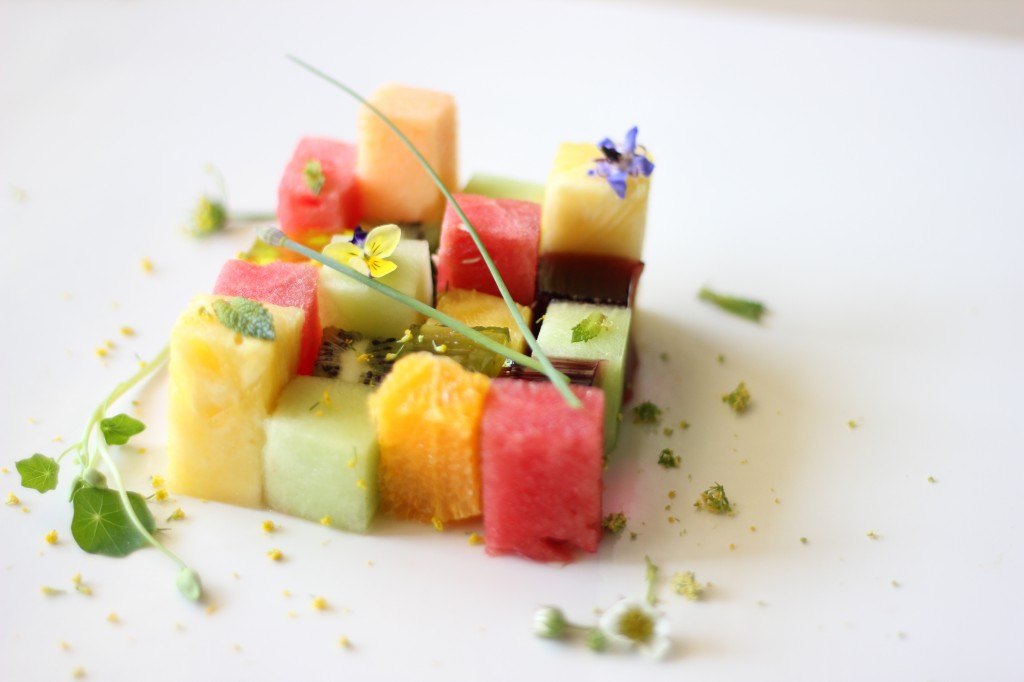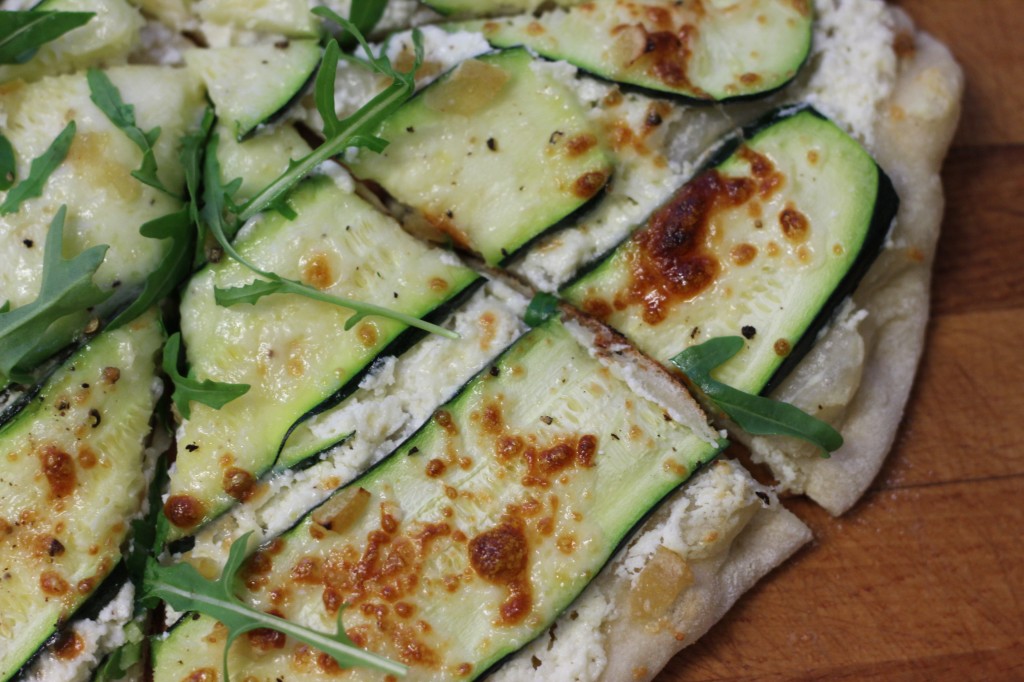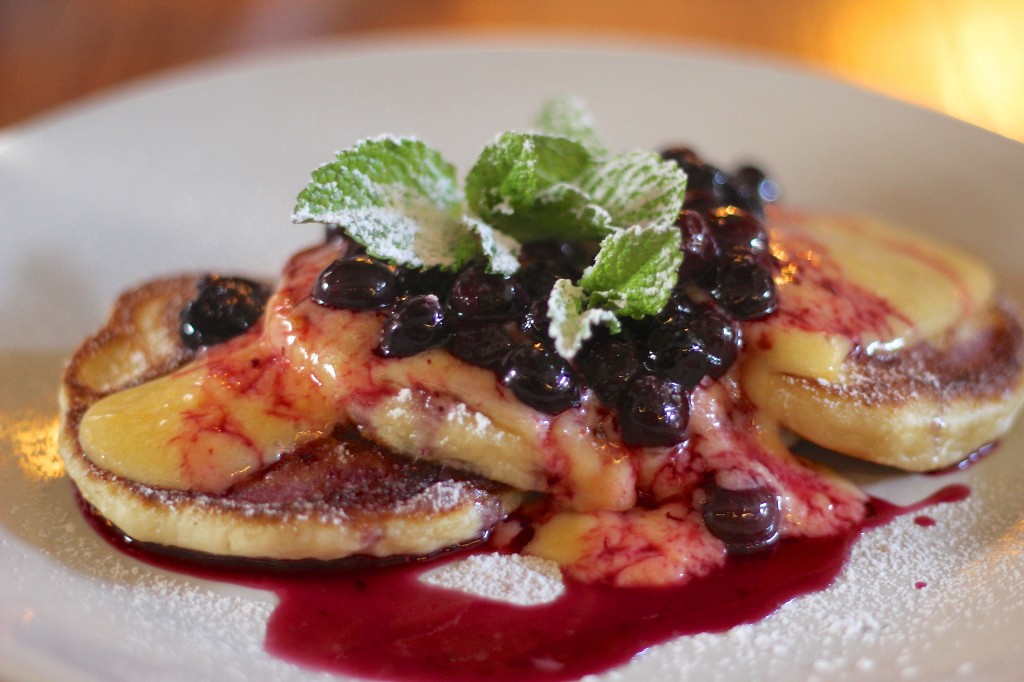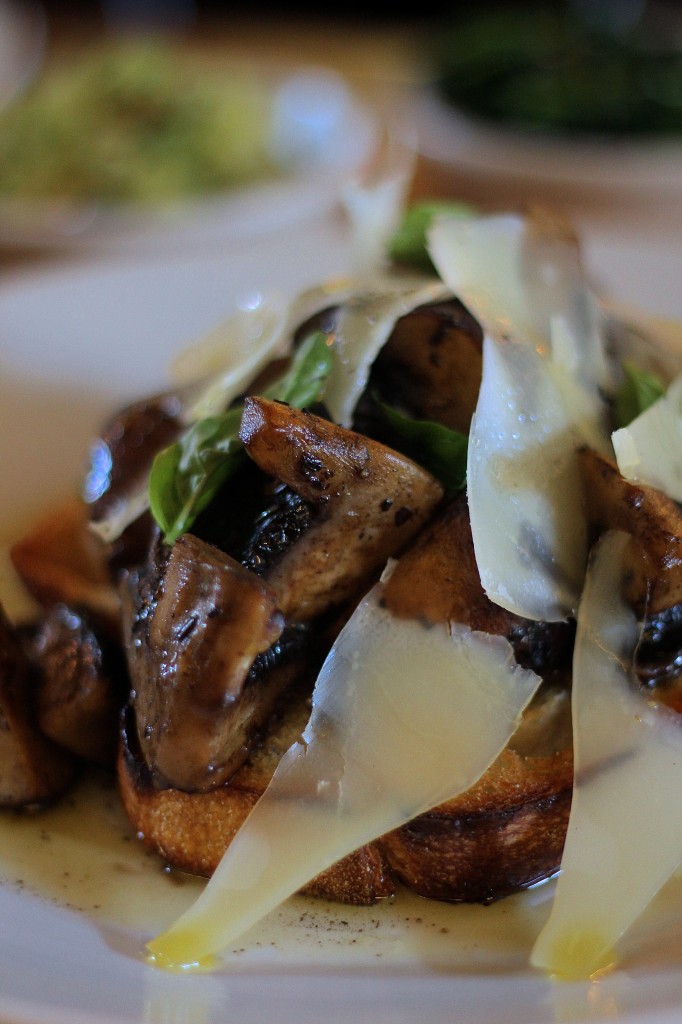
TheCulinaryLibrary
-
Posts
144 -
Joined
-
Last visited
Content Type
Profiles
Forums
Store
Help Articles
Posts posted by TheCulinaryLibrary
-
-
 a quick deconstructed sushi minus the nori simply because I didn't have any in the pantry
a quick deconstructed sushi minus the nori simply because I didn't have any in the pantry
-
Pomegranate Lacquered Duck or Chicken
This easy lacquering technique takes only minutes and works equally well with duck breast or chicken thigh ‘chops’, skin on.
Simply score the skin side of 2 free-range duck breasts or chicken thighs but without going as deep as the meat layer. Season with pepper only and brown, skin side down in a medium heated pan for 7 minutes, reduce the heat and after 2-3 minutes more flip and cook 4-5 minutes on the second side, the exact time depends on the size and thighs will need more. Add a splash of cognac/brandy if you have it and flame off the alcohol and remove meat and rest, covered with foil. Pour any excess fat from the pan and de-glaze with equal amounts of pomegranate concentrate* and honey. Reduce to a syrup, remember it will thicken as it cools, taste, adjust seasoning, adding salt if necessary. Off the heat, add chopped walnuts, pomegranate avrils, orange slices. Lacquer the meat with the sauce. Serve sliced, on a bed of steamed spinach or mash, topped with the juices and extra sauce. Good with a big bowl of steamed spinach or a shaved fennel, walnut and orange salad.
Instead of concentrated pomegranate juice, you can also use pomegranate molasses + a little stock or balsamic vinegar.
-
The Irish villagers of Carragheen discovered a red seaweed and algae extract, carageenan. Also known as Irish Moss, it was initially used to make health syrups and a staple food similar to a saucy blancmange. It's not only a thickener but also a jelling agent, emulsifier, stabilizer, colloid and gum. There are three types: Iota is used most for thickening commercial convenience sauces as it will set them to a soft, silky stage or a light gel, Kappa and Lambda are stronger and used for setting firmer gels. The downside to carageenan is it’s implication as a producer of allergies and abdominal discomfort and degraded carageenan is reported as a known carcinogen causing inflammatory arthritis, bowel disease and tumors. You probably already eat carageenan because it is widely used in thickening flavored milks as well as in soy and almond milk, yoghurt, low fat dairy and meat products, apple cider, ice cream, thickened cream, condensed and evaporated milk, chocolate and thickened convenience sauces. (Many sauces in canned pet food are also thickened with carageenan). The world of Molecular cookery may love its properties but the World Health Organization has recommended it be withdrawn from inclusion in commercial infant foods and formulas.
-
The early 1800’s was the time of the great French chef Careme, who classified sauces as coming from four bases or mothers, Béchamel, Espagnole, Veloute and Allemande. His contribution to the world of sauce making and perfecting was huge, so that by the time of his successor Escoffier, writing his Culinary Guide in 1902, there are over 200 sauces in the western chef’s repertoire.
(Escoffier, reclassified sauces replacing Allemande with the Egg Emulsions, whose mother he called Hollandaise whose secondaries included Mayonnaise, Béarnaise & Russian salad dressing. Escoffier also introduced a fifth mother sauce, Tomato)
Careme and Escoffier’s recipes became known as the ‘classic’ sauces. (They are not called Classical in the culinary world).In the 1960’s the Haute Cuisine and Classic Cuisine movements were replaced by Nouvelle Cuisine. Henri Gault, Paul Bocuse, The Troisgros brothers and Michel Guerard did their best in the 1970’s, 80’s and 90’s to break up the Classic French chefs strangle hold on the world of sauces and introduced contemporary or modern sauces which were lighter and more delicate in their making and plating. Cream and butter sauces replaced reduced meat stocks and rich sauces; broths, de-glazed pans, simple vinaigrettes and sweet and savory purees became popular. Sauces went under and around their partners rather than over the top. Sauces became artistic smears across Michelin starred restaurant plates and with the merging of eastern and western cuisines in Fusion cooking from the 1970’s onwards some foods submerged themselves totally in their sauces or thin aromatic broths, or just dipped their feet in with the widespread use of Asian dipping sauces. The most recent culinary movement, Molecular Cookery or Gastronomy, was established by the Hester Blumenthal’s and Ferran Adria’s of the culinary world but built on the earlier foundations of Colloid Chemistry & Cookery experimenters like Bella Lowe in the 30’s and Harold McGee in the ‘80’s and ‘90’s, who in his, ‘Food & Cooking’ book alone, dedicated 56 pages to the discussion of sauces.
-
Good job! Let us know how it goes.
-
That crying tiger looks great! Where can I find the recipe? assuming the meat is chicken and not something offally!
-
My palate is a bit spoilt because I always do this recipe with whole fillet which is affordable in Australia, but the idea is originally from Anton Mossiman when he was at the Dorchester in London in the late 70's and from memory he used a cut they called entrecote in those days which is equivalent to our porterhouse cut here. Don't know if it's called the same in Canada. You could try it, just get a good quality one, crust it before the oven and make sure to rest it well before slicing. Good Luck.
-
 My Green Papaya Salad & Fruit Salad
My Green Papaya Salad & Fruit Salad
-
If you want to do beef, do it. I wouldn't butterfly it though. Who invented that odd idea anyway? and why? Something that is always tender and luscious is to roast a whole fillet steak, either undercut or scotch depending on your budget and what you like. Roll it in plenty of roughly bashed/cracked black pepper, brown in a butter/fat mix on high heat in a large oven proof skillet or roasting pan then into the oven 180C for 20/40m (med rare /med). You could do a trial run to work out the best cooking time for your oven and fillet size. When cooked, flame the pan with cognac or brandy then remove the meat to your serving dish. While its resting make a pan sauce by adding some pink and green peppercorns, a pinch of flaked salt and plenty of cream, stir until it begins to thicken and color a little (not too much though or it goes gluggy). Slice the beef to your preferred thickness, leaving it in a stacked row, in its juices and spoon over some pepper sauce. (Serve the remainder in a sauce boat.) Baby new potatoes cut the richness of the sauce and also soak it up or get your roast ones on an hour before you start your fillet. Bundles of green beans or asparagus go well too.
-
The eutetic effect is interesting, sometimes lowering the smoke point and sometimes raising it. I don't understand the science myself despite reading the journal articles on google scholar.
-
Different Oils breakdown and degrade at different temperatures and this is called their ‘smoke-point’. It is the temperature at which an oil begins to discolor, burn and turn bitter and when it chemically breaks down and decomposes. Smoke points vary slightly depending on many factors including processing. Although Smoke point degrees should be seen as good approximations only, the smoke point of an oil does decrease with each repeated heating, with contamination by salt or food particles, exposure to light and oxygen and as it thicken and darkens.
But it’s not just heat that caused oil to chemically breakdown. Time, refining, air and light are also factors.It's just a matter of time before the molecular structure of all foods break down and oil is no different. You will know when it begins to happen by the increasing rancidity due to free radical formation.
-the less refined the oil, the more flavor and color it has because of the suspended plant matter, but this also shortens its longevity. The more refined the oil the longer its shelf life but the less color and flavor it has.
-oil oxidizes when exposed to air and plant flavored oils oxidize quicker depending on the type and amount of plant matter suspended. This process can grow a bacteria called ‘clostridium botulinum,’ which can lead to botulism, therefore first cold press oils have a shorter shelf life even when stored in a closed bottle or container.
-light and air cause oil to oxidize and loose nutrients
So smoke point is affected by how old your oil is, how refined, how much it has been exposed to light and air and how much heat is applied to it.
-
A cultivar bred from rapeseed in the 1970’s by two Canadian scientists, Canola, (its name stands for Canadian oil, low acid.), is now the highest produced oil seed crop in the world and recently the third largest crop produced by both Canada and Australia. It is one of Monsanto corporation’s controversial Big 4 genetically modified crops along with soy, corn and cotton. Canola is a very cheap and plentiful oil, pale yellow in color with high viscosity and a mild flavor. It is highly refined and its omega-3 fatty acids are generally damaged in the process. I find the aroma unpleasant and I choose not to use this oil.
-
Have never thought of putting them in a sandwich. Will try next time I cook some.
-
Yes.
Pressure is controlled by temperature: When the liquid inside your pressure cooker is heated it produces steam and being trapped that steam builds your pressure. As your pressure builds the liquid requires higher and higher temperatures to come up to the boil.
Water usually boils at 212F (100C).
At 5 pounds pressure ( psi) it needs to be heated to about 228F (108C) to boil.
At 15 pounds pressure (psi), it needs to reach 250F (121C) in order to boil.
If your stock has too high a liquid to solid ratio it is in danger of venting well before it reaches 15psi so keeping the temperature and therefore the pressure low and below boiling point will work. Reducing the liquid ratio works too, gets you to the magic 15psi for flavor, gives a concentrated stock but not the large volumes this thread is after.With pressure cookers it's not about their price but about their psi generating capacity and most are over-engineered to withstand much more pressure than we can domestically generate.
-
Pressure Cookers : Alter flavor, alter texture and sterilize food.
At low-pressure settings (5-8psi) you get altered texture and quicker cooking. At high-pressure settings (15psi) you get flavor changes as well, both more intensity and new flavors.
Because the way food cooks is affected by both temperature and pressure and boiling temperature is dependant on pressure:
Higher pressure = higher the boiling point = higher cooking temperature.
An oven at 400 F will cook the inside of meat to a maximum of 212 F.
A stovetop pressure cooker at 15psi (the pressure cooker standard) will take it to 250F.
An electric pressure cooker with their lower pressures of approximately 5-8 psi will take it to 227F or 235F.
If you just want to cook your stock or meat quicker use an electric pressure cooker, but preferably a non-venting one like Cuisinart because venting ones vent flavor in the steam rather than retain it.
If you want your stock and meat to taste meatier and more intense you’ll need a stovetop pressure cooker for the 15psi.
Summary:
Electric Venting pressure cookers cook quicker, soften texture but vent flavor.
Electric Non-venting pressure cookers cook quicker, soften texture and retain flavor.
Stove top pressure cookers (standard 15psi units) cook quicker, soften texture and intensify and merge/transform flavor = Alchemy.
-
The larger the leaf and warmer the weather the more hot/peppery/spicy the flavor. I agree with PC, cut it back to get a smaller leaf ( and pick early morning or evenings) for a more subtle mouth friendly flavor. But if you like it really hot try the Mizuna!
-
Baked Beans, also known as Boston bean, Pea bean, Yankee beans or Navy Beans, traditionally haricot beans slow baked with pork & molasses/maple syrup. Imposters are commonly canned and sold in their millions daily swimming in an insipid sugary tomato sauce. Haricot beans are not natives of France, where the equivalent of Boston Beans is called Cassoulet (slow baked with pork sausage, goose or duck), nor of Italy where they are eaten in salads or mashed and although both countries claim them as their own ( as loving adopted parents often do), Haricot Beans were first grown/gathered as a staple food by the Iroquois, Narragansett and Penobscot Indians of North America. They introduced them to the Pilgrims, who then introduced them back to Europe and England where they quickly usurped the place, enjoyed until then, by the Broad Bean. Baked Beans were eaten as a staple food by Native Americans who put them in their earthenware pots with venison or bear fat and maple syrup and slow baked them in pits of hot stones. When the fledgling colony of Boston became a major producer of rum, Molasses was a main ingredient and it soon became common practice to add it to beans, sometimes supplementing the maple syrup and sometimes replacing it. Then all that was needed was for salted or cured smoked pork (bacon) to replace the venison & bear fat and 'Boston Baked Beans' were invented. To make baked beans today we don’t have to restrict ourselves to the Haricot variety but can use a whole mixture including pinto, lima, black-eyed beans, northern beans and in fact any dried beans (or even peas, like chic/cici). I use both dried and pre-cooked beans because I'm not a purist but am sometimes time poor, sometimes lazy, sometimes hungry and I enjoy baked beans, any way.
For Purists:1/2 kg dried Haricot beans, 1/2 kg bacon in the piece or pork belly fried, 1/2 cup molasses, 1 teaspoon each of dry mustard powder & salt and a grind of pepper, water to cover & top-up.
For Experimentalist:2 cans baked beans, 1/4 cup packed brown sugar, 1 tablespoon dry mustard, 1/4 cup ketchup, 1/4 cup pure maple syrup, 1 Tablespoon unsweetened Dutch-process cocoa powder! 1/4 cup water.
For Maple Syrup Lovers: 2 cans Butter or Haricot beans: 200g speck, bacon or pancetta chopped, sauteed,1 brown onion, chopped, sauteed,1 teaspoon each of mustard powder, worcestershire, tomato paste, brown sugar, salt& pepper. 1cup each chicken stock & pureed tomato. A big splash of maple syrup.
For little Kids: Baked Bean Pizza.
For big kids: Do not try Baked Bean Pizza, especially not with bacon/ham/panchetta, calamata oilves and tellegio!
-
Jurassic Rock for those on a Paleo-diet?
-
Also known as Beurre Compose, Finishing butters or Flavor butters, their exact origin is unknown, but compound butters were probably invented in France in the late 1700’s in the time of the first celebrity chef, Marie-Antoine Careme or maybe even his predecessor, Savart. But it wasn't until the 1930's when Careme's successor, Auguste Escoffier, wrote his book 'Le Guide Culinaire,' that we first see comprehensive recipes for 35 different compound butters. I dedicated a whole chapter to them in my book, Alchemy of the Mortar & Pestle, but you can also experiment and make up your own easily. My 50 or so recipes included, as well as a description of the butter types, :
Almond--Anchovy—Blue Cheese or Roquefort—Brown--Café de Paris—Caper Tarragon—Caviar—Chardonnay & Sage—Champagne--Chocolate Orange Jaffa-- Chocolate White—Cranberry Sage—Crepe Suzette--Curry Orange—Egg Yolk--Garlic--Green Tea Matcha--Herb—Honey—Horseradish--Key Lime--Lavender—Lemon Dill-- Lemon Mustard--Liqueur Cherry—Maitre D’Hotel—Manie Roux--Maple Syrup—Montpellier—Mushroom--Pina Colada--Pine nut Parmesan Parsley--Pomegranate Orange--Red Wine—Printanier for soups—Roasted Garlic--Rum & Raisin Butter—Beurre manie--Saffron--Smoked Paprika—Snail--Spiced Rum & Raisin—Tarragon—Truffle—Walnut-- Walnut Raisin--Wasabi—Whiskey--White Wine.
In the Dinner!2012 post pg 70 I posted a picture of my steak compound butter (very melted), sauteed leeks, shallots etc
-
Coming from South Aussie and with a name like Gramp, thought you might be interested in a Barossa tradition. Hot buttered toast with Vegemite topped with ultra thin slices of garlic metwurst. Works just as well with Bonox.
-
There are over 20 different varieties of arugula. If you post a picture I may be able to identify it for you.
-
 Baby rocket on pizza blanc, ricotta, zucchini and preserved lemon, find recipe on my blog, theculinarylibrary.com
Baby rocket on pizza blanc, ricotta, zucchini and preserved lemon, find recipe on my blog, theculinarylibrary.com
-
 Recently: ricotta hotcakes with warmed blueberries and lemon curd, recipe can be found on my blog, theculinarylibrary.com
Recently: ricotta hotcakes with warmed blueberries and lemon curd, recipe can be found on my blog, theculinarylibrary.com
-

Wild field mushrooms roasted with butter, seasoned eaten with fresh basil and shaved cheeseon toasted sourdough.

Green Mangoes
in Cooking
Posted · Edited by TheCulinaryLibrary (log)
Tam som also known as Som tam is the world famous green salad of Laos, Thailand and Cambodia and usually made with green papaya (also known as pawpaw) pounded with lime, chili, fish sauce and palm sugar to give it its sour, spicy, salty, sweet balance. There are regional and national variations on the recipe, some with added peanuts, lime leaves, tomato, basil, snake bean, prawns or dried shrimp. Green mango is better known in Indian and Phillippino cooking but is one such variation occasionally added to Tam som but used as an additive rather than a replacement to the green papaya and unlike our western mango varieties the one they use is not fibrous around the seed. So Raamo and Panaderia are both right and I’d ask the Indian grocer for my green mango. Green Papaya and green mango have the same texture but the mango is slightly sweeter and not so savory so you might find it easier to buy green papaya at the Asian markets and just sweeten it a little more for the same taste you are after.